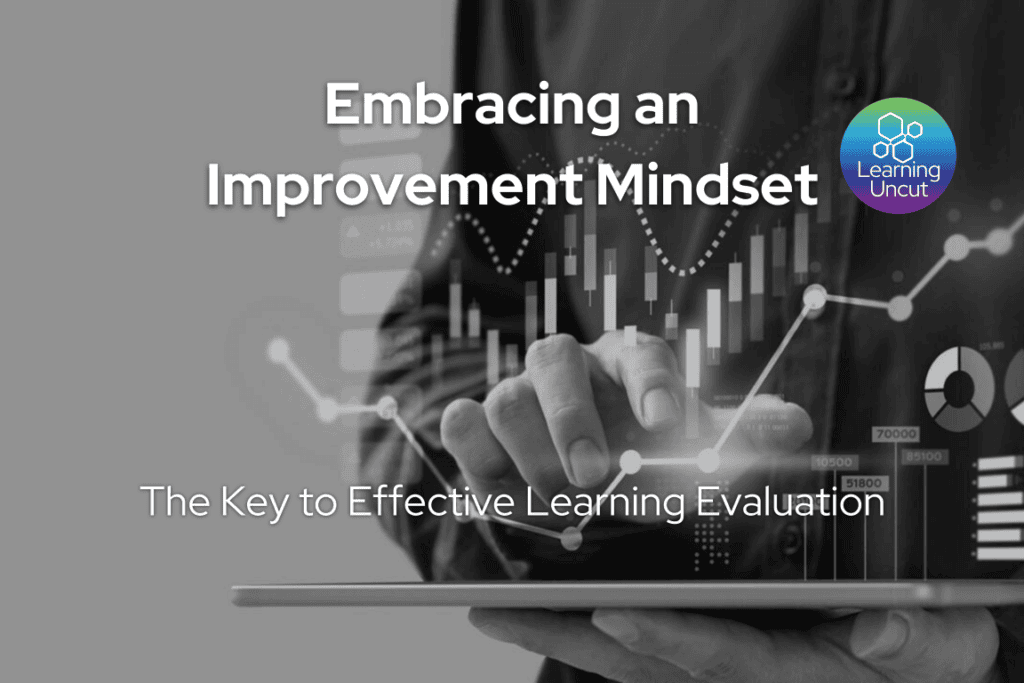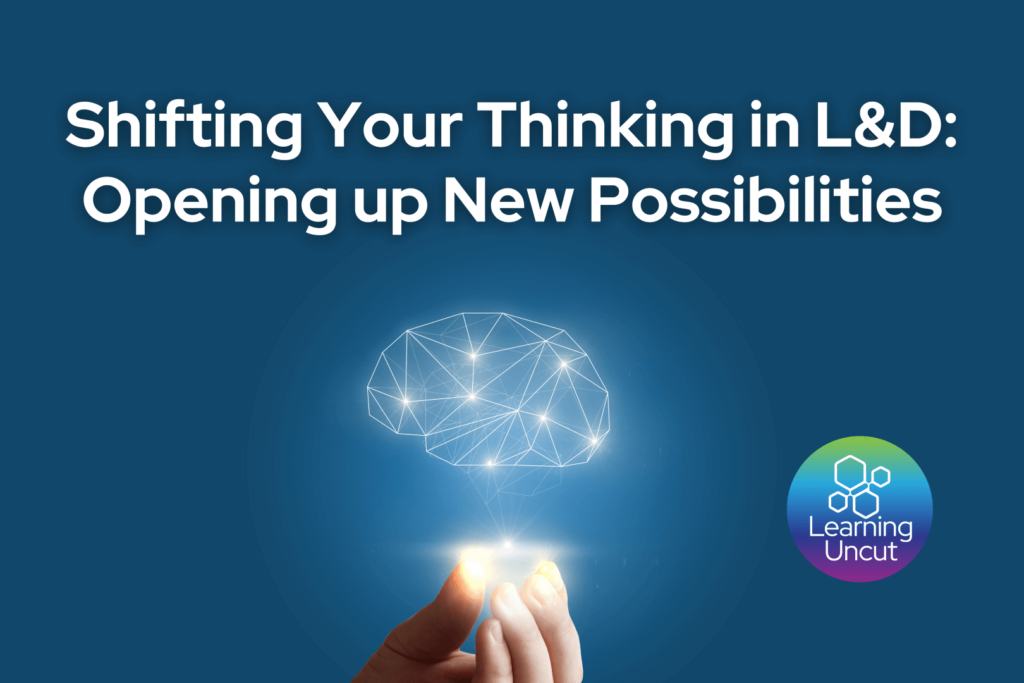As learning and development professionals, we often get caught up in trying to prove our worth. However, we are more comfortable talking about how we add value in terms of inwardly focused metrics such as program completion rates and learner satisfaction scores. But what if we’ve been approaching evaluation all wrong? What if, instead of focusing on proving value, we shifted our mindset to improving value – with a focus on business outcomes and impact?
At Learning Uncut, we’ve long advocated for a more strategic approach to L&D, including effective evaluation of learning solutions. We follow the annual L&D Benchmark Report from Mind Tools for Business,[i] which has consistently shown that top performing L&D teams are far more likely to understand the business problem before developing a learning solution and to track and use data to improve solutions and demonstrate impact.
This finding is reinforced by the “Measuring the Business Impact of Learning in 2023” report from Watershed and GP Strategies.[ii] The report reveals that L&D teams perceived as strategic partners to the business approach evaluation differently. They’re more likely to set metrics before a program starts, focus on business impact, and have dedicated budgets for measurement efforts.
During 2023 I interviewed 16 L&D leaders about their evaluation practices. In one of these conversations with an L&D leader in a pharmaceutical company, I heard a striking comment that encapsulates the power of shifting your thinking about evaluation. They said, “I love it now. It used to be the bane of my life.” Embracing evaluation has allowed them to have more meaningful conversations with business leaders about their goals and how L&D can support them. In turn this has led to increased investment in L&D. The benefits that this L&D leader described highlights how adopting the right mindset can turn evaluation from a neglected or dreaded task into a valuable tool for improvement.
This shift in evaluation mindset from proving to improving has the potential to drive a significant uplift in the performance of an L&D team. Here’s why:
- It fosters curiosity: When we evaluate to improve, we ask better questions. We look at patterns and outliers, seeking to understand what’s working and what isn’t.
- It encourages collaboration: Improvement-focused evaluation involves multiple stakeholders. The Watershed/GP Strategies report shows that strategic partners are more likely to collaborate with business leaders on defining metrics.
- It promotes objectivity: By focusing on improvement, we become more open to critical feedback. We’re not just looking for positive results; we’re seeking actionable insights.
- It drives continuous improvement: Every evaluation point becomes an opportunity to refine and enhance our learning solutions to improve impact. 5. It aligns with business goals: When we evaluate to improve, we naturally focus more on business impact and less on vanity L&D metrics.
- It aligns with business goals: When we evaluate to improve, we naturally focus more on business impact and less on vanity L&D metrics.
So, how can we cultivate this improvement mindset? Here are some key steps:
- Start with the end in mind: Understand the underlying business problem and define success metrics in collaboration with business stakeholders before designing a learning solution.
- Focus on impact: Move beyond learner satisfaction and completion rates. Evaluate how the learning is being applied and its impact on performance and business goals.
- Embrace data: Use data to understand skill and performance gaps, and to track and improve progress and outcomes.
- Allocate resources and time: ‘Competing priorities’ consistently tops the Watershed/GP Strategies research as the main barrier to evaluation. L&D teams are often too busy moving on to the next program to build in time and resources to evaluate and improve the solutions they are already working on.
- Design for evaluation: Include evaluation right up front in the solution design phase and embed data gathering and analysis to drive improvement throughout the solution life cycle.
- Be courageous: Rather than fear accountability, view evaluation as an empowering tool that helps you deliver better results.
Shifting to an improvement mindset isn’t always easy. It requires vulnerability, openness to feedback, and a willingness to change. But the rewards are significant. L&D teams that embrace this approach are more likely to be seen as strategic partners, have credibility and influence in their organisation and deliver measurable business value.
As we move forward in an increasingly data-driven world, the ability to effectively evaluate and improve our learning solutions will become even more critical. By adopting an improvement mindset now is a critical first step to effective learning evaluation that uplifts your performance and impact.
Learning Uncut runs Learning Evaluation workshops for L&D teams – as well as workshops on other topics which will lift the performance and impact of your L&D team. Reach out to [email protected] if you’d like to explore a workshop for your L&D team.
[1] The annual L&D Benchmark Reports can be found at https://www.mindtools.com/business/research/
[2] Watershed and GPStrategies, Measuring the Business Impact of Learning in 2023. Accessed on 20 July 2024 at https://www.watershedlrs.com/resources/research/resource-measuring-business-impact-learning-2023/


